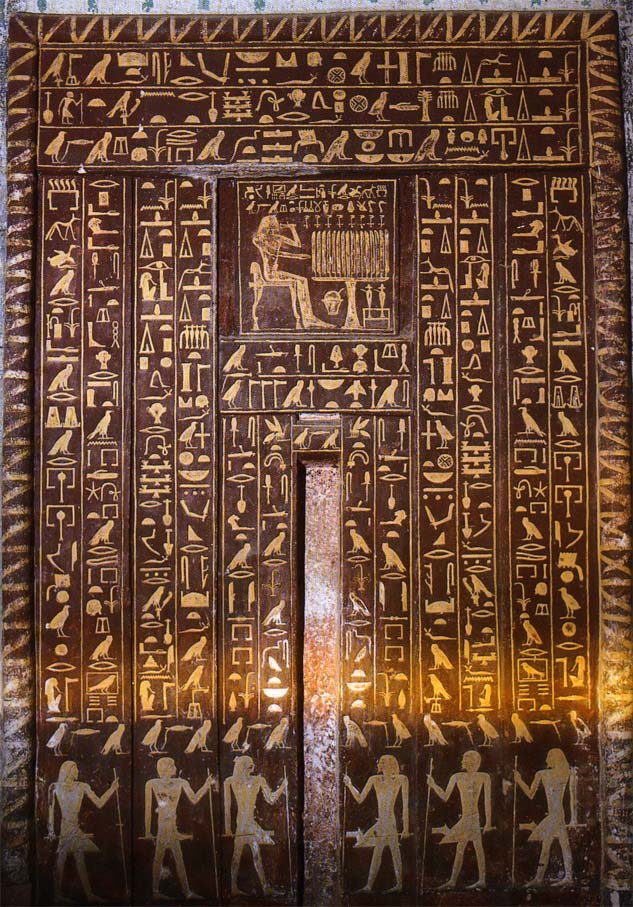
(an AEL-L excercise)
Below a picture of the false door from the mastaba of Mehu (dyn. 6)
at Saqqara.
The below picture stems from "Aegypten, Die Welt
der Pharaonen", 1997, ed. Regine Schultz and Matthias Seidel.
(There is also a Dutch version of this book. The English version is:
"Egypt, The World of the Pharaohs", ISBN 3-89508-913-3). (Thanks
to Marc Line for scanning it).
For reference purpose, I'll devide the door into these
sections:
1) The imitation beam between the inner door-posts, high in the
door opening, which in real life carried the mat to be hung
across the opening. Only the name of the owner is
written on it: mHw = Mehu
2) The two inner door-posts, flanking the door-opening; the
text on left and right post (two columns of text each) is the same.
3) The lintel, above the inner door-posts and the door-opening, with two rows
of text, and the name of the tomb owner (mHw) written
vertically on the left.
4) A stela in a niche above the lintel, showing the tomb
owner eating from the offerings, with text on top.
5) The outer door-posts, flanking the inner door-posts
and the stela. Perhaps one could say there are two outer
door-posts (a middle door-post and an outer door-post), but
let's call these parts:
5A) the inner panel of the outer door-post, with two
columns of text.
5B) the outer panel of the outer door-post, with two
colums of text.
So four text columns on each side. The texts on the left and right
outer door-posts is the same .
6) The architrave above the outer door-posts and the stela,
with three rows of text.
7) At the whole lower end of the false door,
we see the standing tomb owner with his name, mHw,
three times per side (once on the inner doorpost,
once on the inner panel of the outer doorpost, once
on the outer panel of the outer doorpost).
The sorted AEL thread with translations and comments (html, 76 kB)

Copyrights: I've been told that according to the "fair use" exemption to the
copyright rule, one is allowed to use quotes and pictures from a work for
purposes such as teaching and scholarship [and we may see AEL as a classroom],
and provided proper citations and references are given.